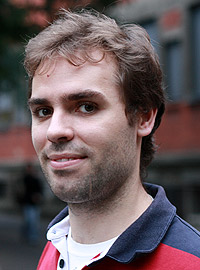Local moisture distribution in a mortar paste by ex-situ and in-situ MRI : Application to the understanding of the drying process

Maxime Van Landeghem, doctorant. Crédits : ESPCI ParisTech The development of high performance cementitious materials in terms of mechanical properties, sustainability and permeability requires a good understanding of their porous structure. As a non-destructive tool, Magnetic Resonance Imaging (MRI) is a method of choice for studying water distribution and hydric transfer throughout the material. However, due to a pore-size distribution over a few orders of magnitude and the presence of paramagnetic impurities, MRI applied to these materials requires the use of high magnetic field gradient systems and fast acquisition rates. For this purpose, we developed two techniques. Performed ex-situ, STRAFI allows to follow the effect of temperature and humidity on the water distribution within the material but also its impact on the porous structure and thus on the material performances expected. The NMR-MOUSETM, acting at low field and being portable, allows us to follow the drying of cementitious materials directly on-site. As such, it appears as an interesting tool for industrial use. Finally, the implementation of a method to understand multi-site exchange NMR experiments in porous media allowed us to quantify the exchange rates involved between various pores within the materials, which provides information about the porosity and connectivity of the porous structure.







